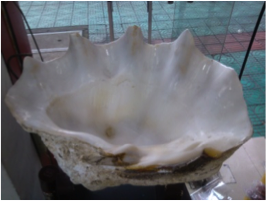What to know when buying pearls
Types of Pearls
Akoya Pearls
Akoya pearls are the classic cultured pearls of Japan. They are the most lustrous of all pearls found anywhere in the world. In recent years, China has been successful in producing Akoya pearls within their own waters. However, at this time they are unable to produce as brilliant a luster as high quality Japanese Akoya cultured pearls. In general, Akoya pearls are the pearls that are the most lustrous of all types of pearls. They are normally cultivated in cold waters.
South Sea Pearls
White South Sea cultured pearls are grown in large tropical or semi-tropical oysters in Australia, Myanmar, Indonesia and other Pacific countries. This area is inhabited by some impressing oyster species and they are the ones that produce those impressing pearls, in terms of size. There is two different species of this oyster, each producing a different color. One being a gorgeous golden pearl, and the other being a brilliant white pearl. They generally range in size from 10mm to 20mm and command premium prices because of their relative rarity and large size.
Tahitian Pearls
Tahitian cultured pearls are grown in a variety of large pearl oysters found primarily in French Polynesia. Their beautiful and unique colors which can range from light grey to black and green to purple and large size can command very high prices. Their impressing size, which is a little bit smaller than the South Sea pearls, can go from 9mm to 18mm.
Freshwater Pearls
Freshwater pearls can be found in bays and rivers throughout the world. They are easily cultivated from freshwater mollusks in China, Japan and the United States. This is the most common pearl. Many are less lustrous than salt water cultured pearls but their low price, unique shapes and colors have made them popular jewelry items in recent years. Freshwater pearls will usually not grow over 14mm or 15mm.
Mabe Pearls
Mabe pearls are hemispherical cultured pearls grown against the inside shell of an oyster rather than within the oyster’s body. Which results in an hemispherical pearl with a flat side and a round side. They generally are used in earrings or rings which conceal their flat backs. They are generally bigger than freshwater pearls and their unique luster gives hues similar to a rainbow.
Shell Pearls

Shell Pearl is a man made pearl from an oyster shell (laboratory made). The process of making this type of pearls involves different stages such as cutting the raw material, shaping, polishing and coating to protect the pearls. Customers love these pearls for their availability in large sizes, various shapes, their uniformity and their affordability.
When Buying Cultured Pearls
You can evaluate any piece of cultured pearl jewelry on the following quality factors. But always remember that the better the quality of pearls you select the more beautiful and valued they will be over time.
LUSTRE: Lustre is a combination of surface brilliance and a deep seated glow. The lustre of a good quality pearl should be bright and not dull. You should be able to see your own reflection clearly on the surface of a pearl. Any pearl that appears too white, dull or chalky indicates low quality.

SURFACE: Cleanliness refers to the absence of disfiguring spots, bumps or cracks on the surface of a pearl. The cleaner the surface of the pearl, the more valuable it will be.

SHAPE: Since cultured pearls are grown by oysters in nature, it is very rare to find a perfectly round pearl. However, the rounder the pearl, the more valuable it is. Baroque pearls, which are asymmetrical in shape, can be lustrous and appealing, and often cost less than round pearls.
For more information about pearl shapes, see our detailed table here !

COLOR: Cultured pearls come in a variety of colors from rosé to black. While the color of a pearl is really a matter of the wearer’s preference, usually rosé or silver/white pearls tend to look best on fair skins while cream and gold toned pearls are flattering to darker complexions.

SIZE: Cultured pearls are measured by their diameter in millimeters. They can be smaller than one millimeter in the case of tiny seed pearls, or as large as twenty millimeters for a big South Sea pearl. The larger the pearl, other factors being equal, the more valuable it will be. The average sized pearl sold today is between 7 and 7.5 millimeters.






